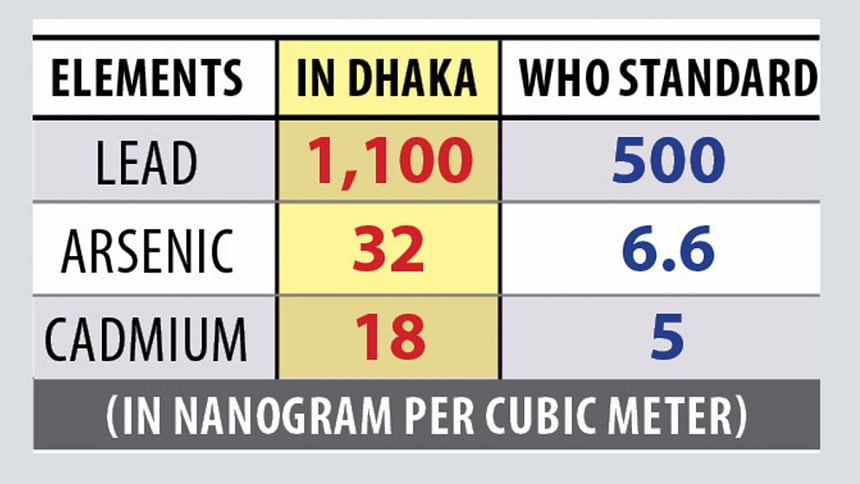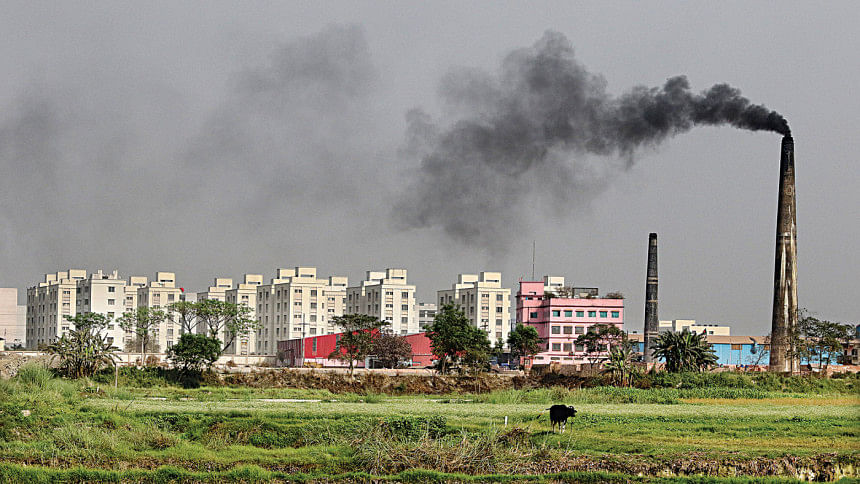Dhaka’s Toxic Air: High levels of cancer-causing elements found
The concentration of cancer-causing arsenic, lead and cadmium in Dhaka air is almost double the permissible limit set by the World Health Organization, a new study has found.
Informal lead-acid battery and e-waste recycling industries, coal-fired brick kilns, and vehicles contribute to higher concentration of the chemical elements, the study said.
It also detected high concentration of cobalt, another element that can cause cancer, in the city’s air.

The research conducted in 27 locations across the world says Dhaka is the only site where combined carcinogenic risk “exceeds the benchmark for both adults and children”.
The study titled “Elemental Characterization of Ambient Particulate Matter for a Globally Distributed Monitoring Network: Methodology and Implications” was published in the peer-reviewed journal ACS ES&T Air on March 10.
The Surface Particulate Matter Network, the only global monitoring network that measures fine particulate concentrations collected the data to identify regions with elevated chemical elements.
Researchers studied the elemental composition of particulate matter samples between 2019 and 2023 to understand the distribution of dust and chemical elements, assess health impacts, and investigate emission sources.
According to Prof Abdus Salam, one of the researchers, lead pollution in Bangladesh is causing the presence of alarming levels of lead in the air.
“Lead concentration used to be high once. Then it declined, and we usually got 400 to 500 nanograms per cubic metre of air. But nowadays we get over 1,000 nanograms,” says Prof Salam, who teaches chemistry at Dhaka University.
The study finds Dhaka air as the most hazardous followed by those of Kanpur (India), Hanoi, Singapore, Beijing, and Kaohsiung (Taiwan).
The findings will allow researchers to perform more accurate health risk assessments and thorough investigation into emission sources, said Prof Salam.
According to a Unicef and Pure Earth report, around 1 in 3 children — almost 800 million globally — have blood lead levels at or above 5 micrograms per deciliter (µg/dL), the level which requires action.
It is estimated that 35.5 million children in Bangladesh are affected with blood lead levels above 5 μg/dL, making the country the fourth most seriously hit in the world in terms of the number of children affected.
While dust originates from natural sources like deserts and human activities like construction and agriculture, chemical elements like lead and arsenic are predominantly emitted by human activities like fossil fuel combustion and industrial processes.
The number of cancer patients is steadily increasing in Bangladesh, and in the year 2050, the country may record more than double the new cases of 2022, according to a WHO report published early this year. In Bangladesh lung cancer is one of the most common forms of cancer.
Contacted, Environment, Forest and Climate Change Minister Saber Hossain Chowdhury said, “We take note of peer-reviewed research findings. These are findings that need to be looked at closely. We are aware that e-waste from battery-powered three-wheeler rickshaws requires particular attention. We will keep the findings in mind when we formulate our responses.”
The link between environmental degradation and public health cannot be overlooked, he added.
LondonGBDESK//



Comments are closed.